The Dolomites, a UNESCO World Heritage site in northern Italy, offer some of the
most dramatic mountain scenery in Europe. These limestone peaks, with their
distinctive pale color and jagged formations, create an otherworldly landscape that
beckons adventure seekers from around the globe.
From challenging via ferratas to peaceful alpine meadows, the region combines
Italian charm with Austrian influences, resulting in a unique cultural and natural
experience that will leave you breathless – both literally and figuratively.
Tre Cime di Lavaredo
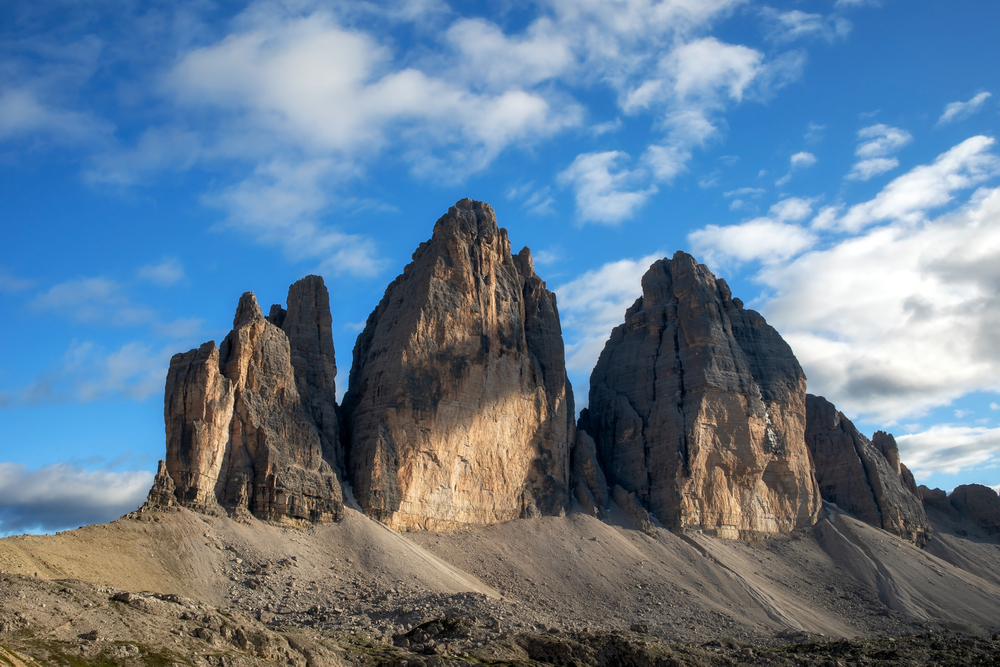
These three distinctive peaks form perhaps the most iconic image of the Dolomites,
rising dramatically from the surrounding landscape. The circular hiking trail around
these towers spans 6 miles and offers constant panoramic views without requiring
technical climbing skills.
You’ll find the historic Rifugio Auronzo at 7,650 feet, providing a perfect base for exploration. The area becomes particularly magical during sunrise and sunset when the pale rock takes on a rosy alpine glow known locally as ‘enrosadira.’
Lake Braies (Pragser Wildsee)
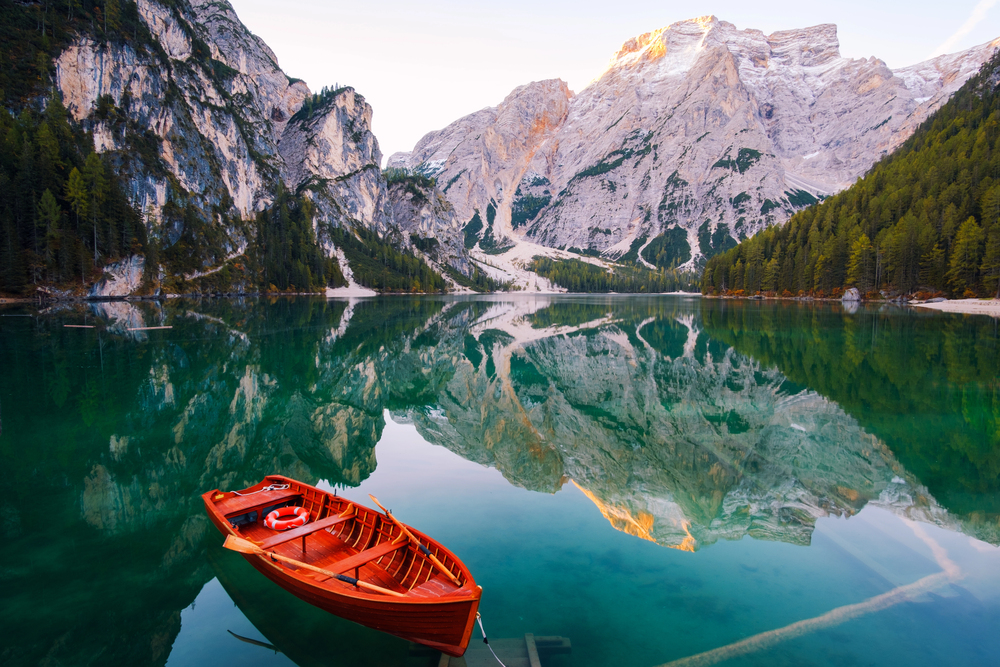
This emerald-green alpine lake, nestled at 4,700 feet, reflects the surrounding peaks
like a mirror on calm mornings. You can rent traditional wooden boats to row across
its crystal-clear waters or take the 2.5-mile trail that circles the lake.
The historic Hotel Lago di Braies, built in 1899, offers both accommodation and a glimpse into the region’s past. During summer months, wildflowers dot the shoreline, while in winter, the frozen lake creates an entirely different kind of magic.
Like Travel Pug’s content? Follow us on MSN.
Seceda Ridgeline
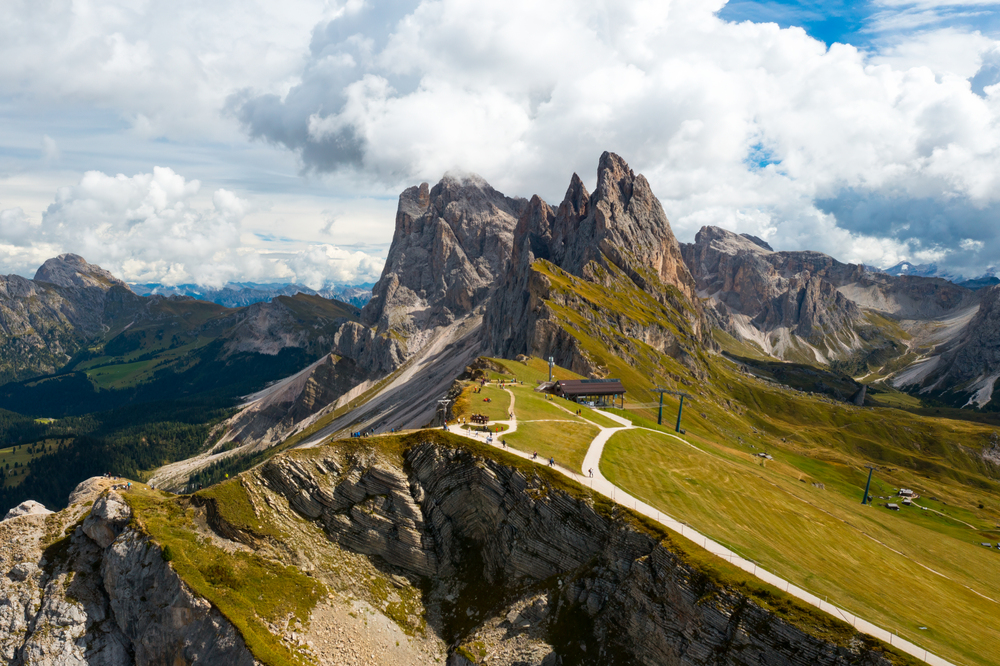
Rising above the Val Gardena, the jagged Seceda ridgeline presents one of the most
dramatic landscapes in the entire range. The cable car from Ortisei brings you to
8,200 feet, where a relatively easy hiking trail leads to the famous sawtooth edge.
You’ll find yourself surrounded by alpine meadows in summer, with the peaks of
Sassolungo and Sella visible in the distance. The area is also popular for
paragliding, offering birds-eye views of the surrounding valleys.
Val di Funes
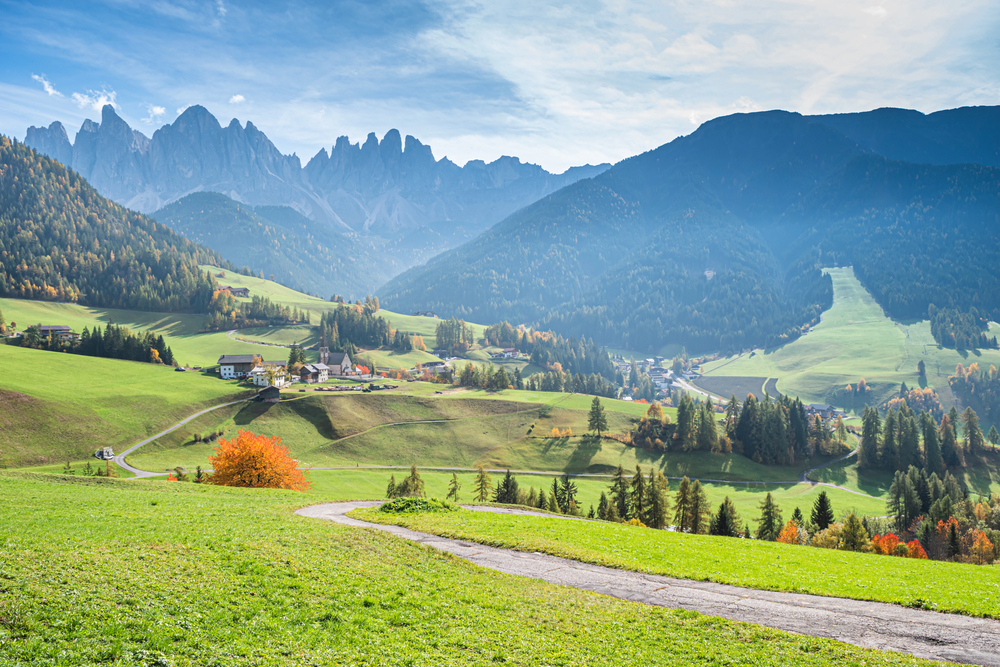
This picturesque valley showcases the classic Dolomites scene: sharp peaks rising
above green meadows dotted with traditional wooden churches and farmhouses.
The Santa Maddalena viewpoint offers the most famous perspective, with the
Odle/Geisler peaks forming a perfect backdrop.
You’ll find numerous hiking trails ranging from easy meadow walks to challenging mountain ascents while the valley’s small villages maintain their authentic South Tyrolean character.
Alpe di Siusi
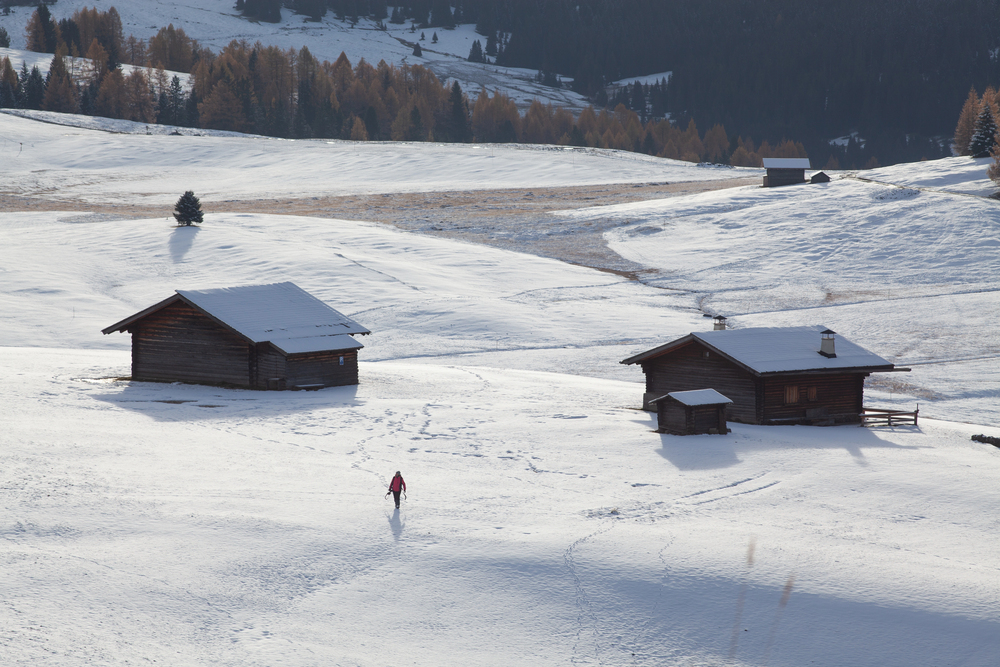
Europe’s largest high-altitude plateau spans over 23 square miles at heights
between 5,900 and 7,700 feet. During summer, the meadows burst with colorful
wildflowers, while winter transforms the area into a popular ski destination.
You can access this natural wonderland via cable car from either Ortisei or Siusi, finding
yourself surrounded by grazing cattle and traditional mountain huts serving local
specialties like speck and canederli.
Like Travel Pug’s content? Follow us on MSN.
Lago di Sorapis
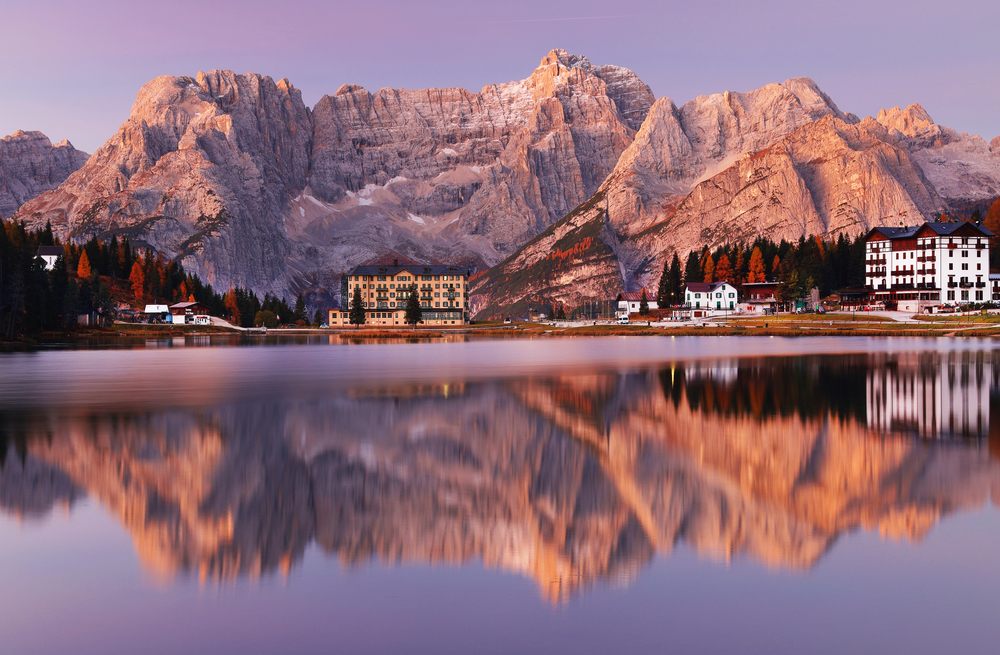
This milky-blue lake, reached only by foot, rewards hikers with one of the most
striking watercolors in the Dolomites. The 4-mile trail from Passo Tre Croci includes
some exposed sections with cables for safety, making the journey part of the
adventure.
You’ll find the rustic Rifugio Vandelli perched near the lakeshore at 6,500 feet, offering simple meals and basic accommodations. The surrounding amphitheater of peaks creates a sense of isolation that’s increasingly rare in the region.
Val di Fassa
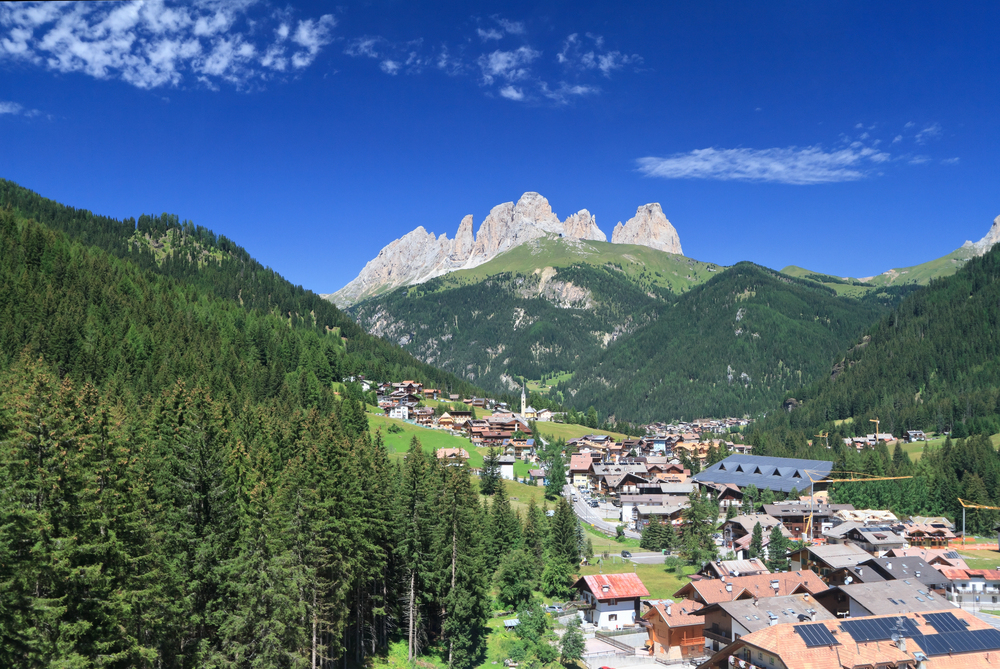
This valley serves as a perfect base for exploring some of the most dramatic peaks
in the Dolomites. The Sassolungo group dominates the skyline, while the Sella
massif offers numerous via ferrata routes.
You’ll find charming villages like Canazei and Moena maintaining their Ladin culture and language, with summer festivals celebrating ancient traditions. The valley also provides access to the famous Sella Ronda circuit, popular with both skiers and cyclists.
Cinque Torri

These five distinctive towers have long attracted rock climbers with routes ranging
from beginner to expert level. A short cable car ride from the Falzarego Pass brings
you to the base of these formations, where you’ll find open-air museums showcasing
World War I remnants.
The rifugio at the base serves excellent mountain cuisine while providing front-row seats to climbing action. Even non-climbers can enjoy the spectacular views and historical significance of this area.
Like Travel Pug’s content? Follow us on MSN.
Passo Giau
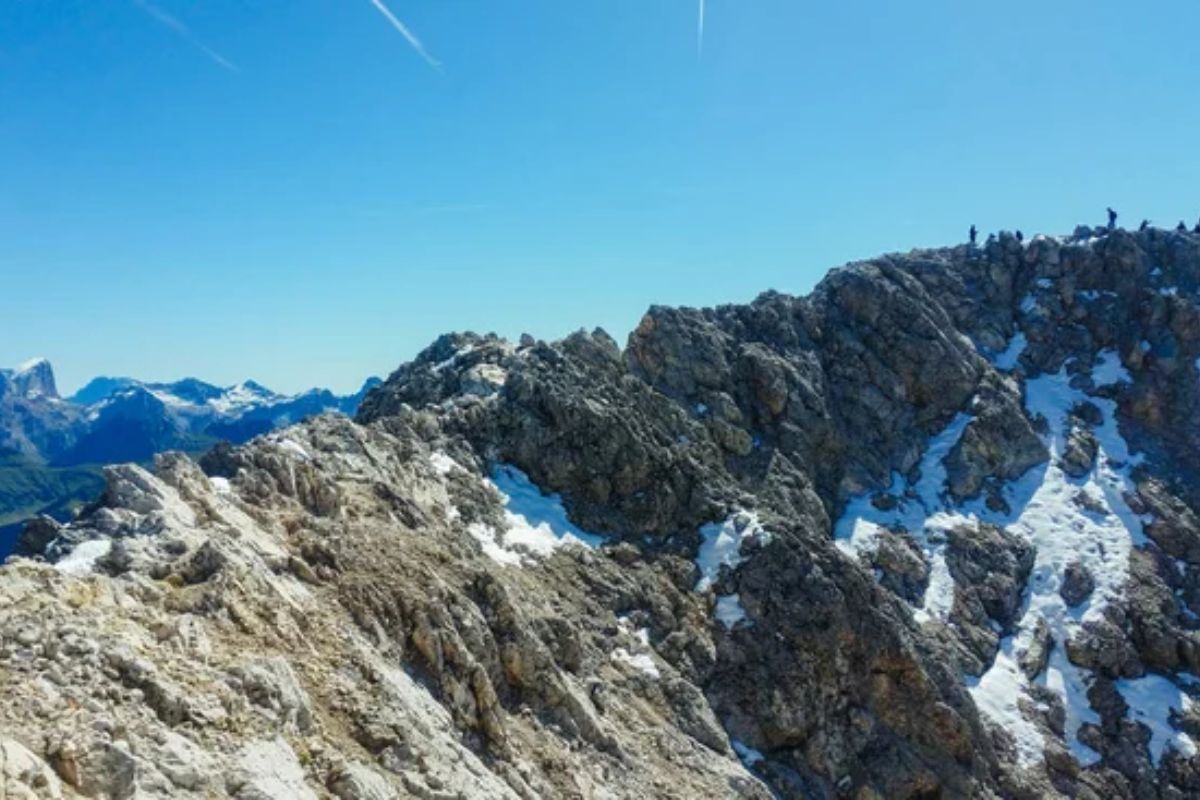
This high mountain pass at 7,336 feet offers some of the most accessible panoramic
views in the Dolomites. The distinctive peak of Mount Nuvolau dominates the
landscape, while the surrounding meadows burst with alpine flowers in summer.
You’ll find numerous hiking trails radiating from the pass, including the popular route
to the Mondeval archaeological site. The pass also features prominently in the
Maratona dles Dolomites cycling event, challenging riders with its steep gradients.
Marmolada

Known as the ‘Queen of the Dolomites,’ this massif includes the region’s highest
peak at 10,968 feet. The cable car system provides access to the glacier and
museum commemorating World War I battles fought in these mountains.
You’ll find it challenging via Ferrata routes and rock climbing opportunities, while the more adventurous can attempt glacier skiing even in the summer months. The mountain
hut Capanna Penia offers overnight stays with incredible sunrise views.
Lago di Carezza
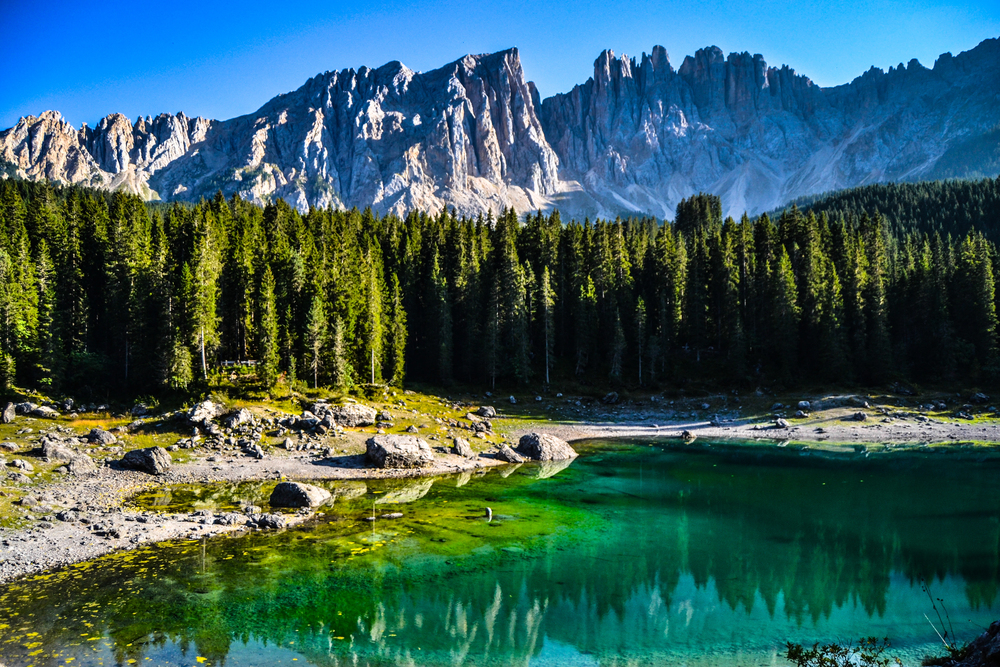
This small but stunning lake, known locally as Karersee, captures the imagination
with its rainbow colors caused by mineral deposits. According to local legend, a
wizard created the lake’s colors to impress a mermaid.
You’ll find an easy walking path circling the lake, with information boards explaining both the scientific and mythological aspects of this natural wonder. The surrounding forest of spruce and stone pines adds to the fairy-tale atmosphere.
Like Travel Pug’s content? Follow us on MSN.
Val Gardena
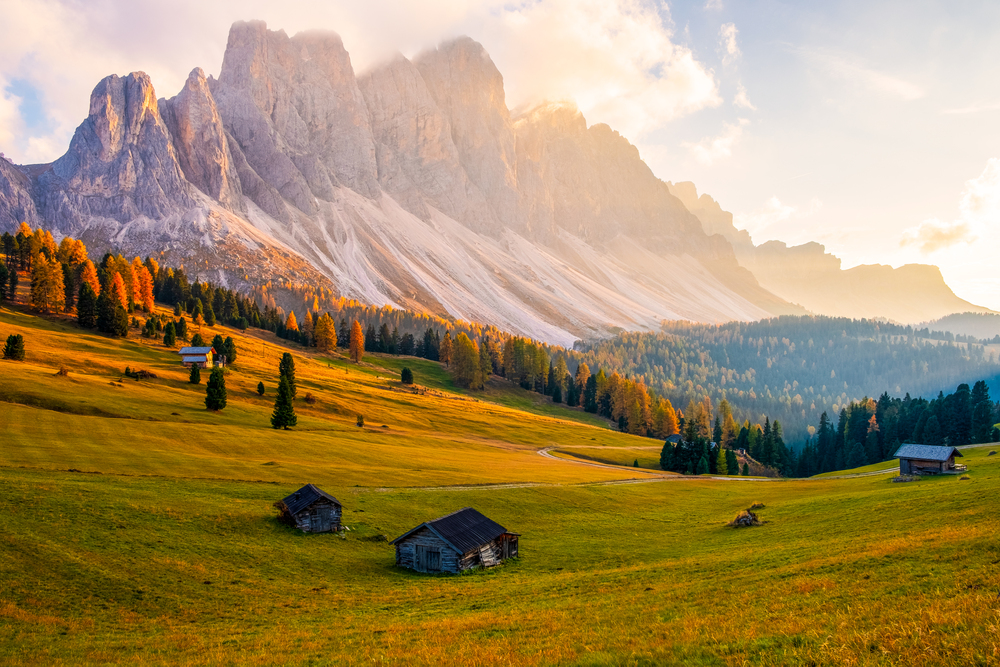
This valley combines world-class outdoor activities with a strong Ladin cultural
heritage. The villages of Ortisei, Santa Cristina, and Selva maintain centuries-old
woodcarving traditions alongside modern sports facilities.
You’ll find access to the Sassolungo group and the Puez-Odle Nature Park, with hundreds of miles of hiking and biking trails. The valley becomes particularly lively during winter when it hosts World Cup ski events.
Passo Pordoi
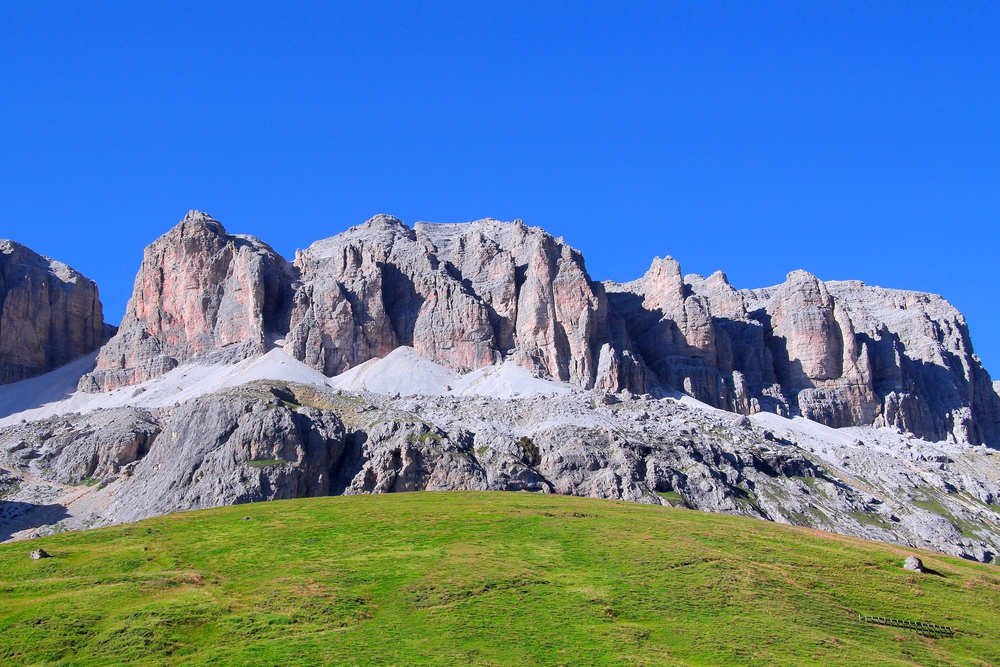
Standing at 7,346 feet, this pass offers spectacular views of the Sella group and
Marmolada. The cable car ascent to the Sass Pordoi plateau at 9,685 feet provides
access to what locals call the ‘Terrace of the Dolomites.’
You’ll find numerous hiking options, including the trail to the Piz Boè summit, while road cyclists challenge themselves on the pass’s famous hairpin turns. The memorial to Fausto Coppi adds historical interest for cycling enthusiasts.
Lago di Dobbiaco
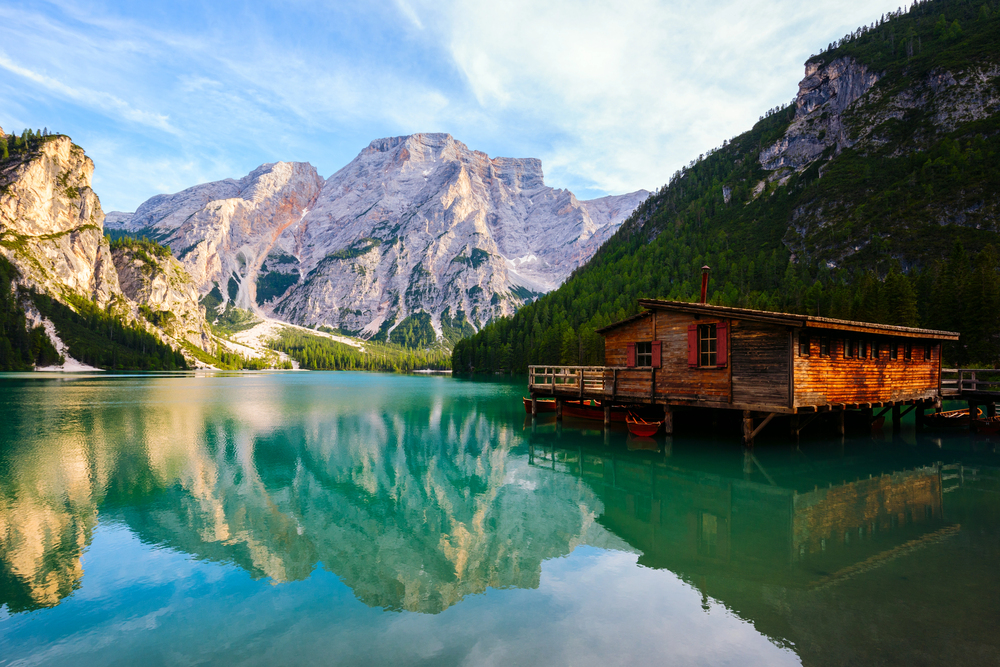
This serene lake in the Val Pusteria offers easier hiking options while maintaining the
dramatic Dolomites backdrop. The flat trail around the lake spans 2.5 miles, perfect
for families or those seeking a gentler experience.
You’ll find excellent bird-watching opportunities, particularly during migration seasons, while the historic Grand Hotel provides a glimpse of the area’s past as a Habsburg resort destination. The nearby cultural center hosts summer music festivals in a converted grain mill.
Like Travel Pug’s content? Follow us on MSN.
Cortina d’Ampezzo
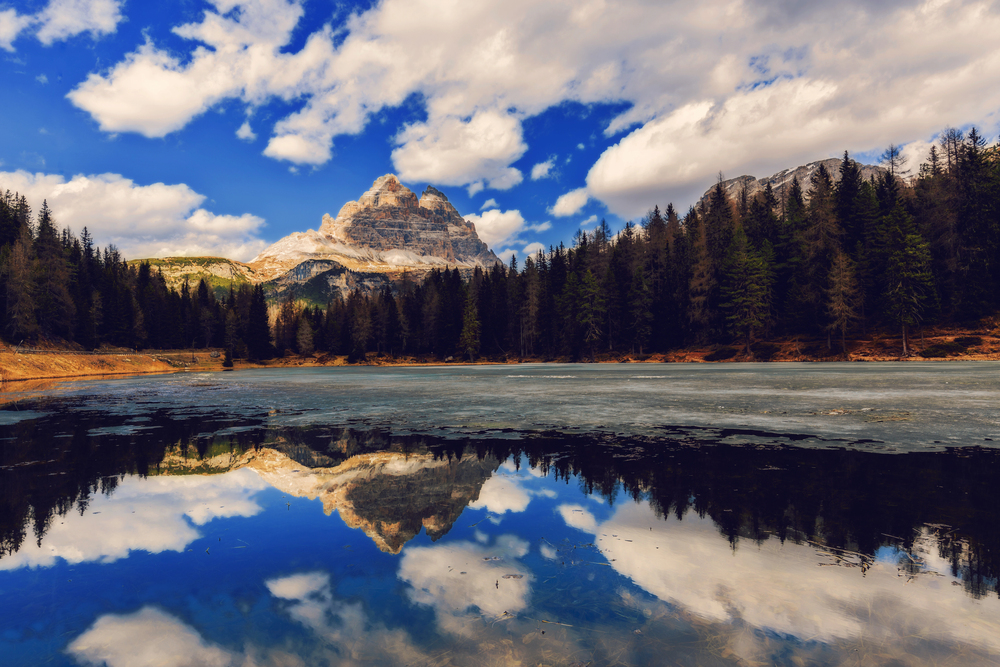
This glamorous town, host of the 1956 Winter Olympics and upcoming 2026 games,
serves as an excellent base for mountain adventures. The surrounding peaks offer
everything from casual walks to serious mountaineering while the town itself
maintains its historic charm.
You’ll find the Olympic ski jump still standing, numerous museums highlighting local history and culture, and sophisticated dining options featuring both Italian and Tyrolean influences. The scenic cable cars provide easy access to high-altitude experiences.
Val Fiscalina
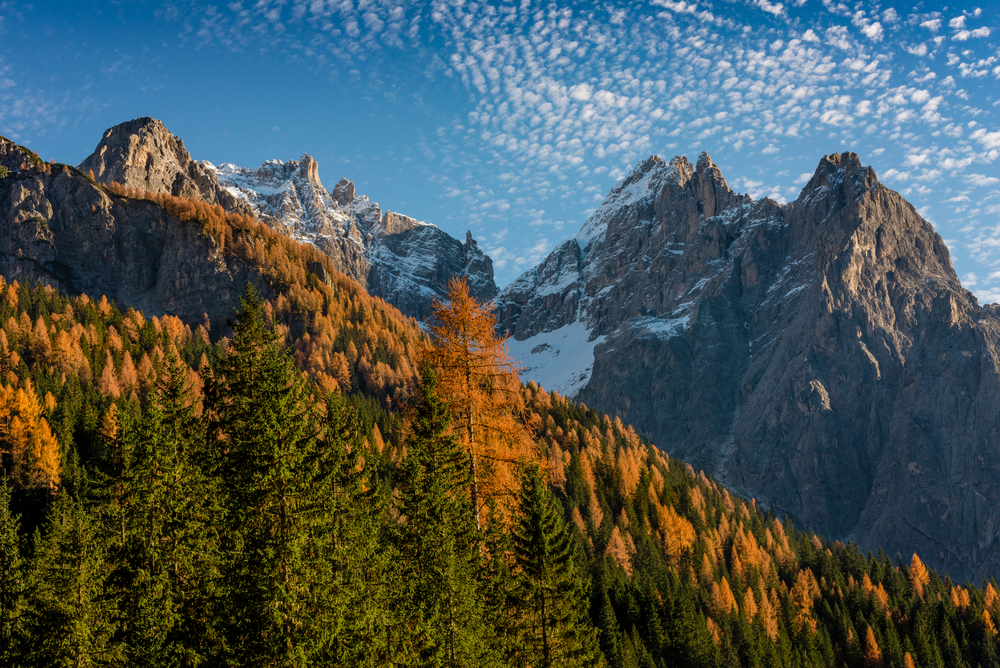
This narrow valley near Sesto offers a perfect introduction to the Dolomites’
grandeur. The trail leading to the Tre Cime starts here, passing through forests and
alpine meadows before reaching higher altitudes.
You’ll find several mountain huts along the way, including the historic Rifugio Fondovalle, while the surrounding peaks create a natural amphitheater. The valley becomes a peaceful cross-country skiing destination in winter.
Passo delle Erbe
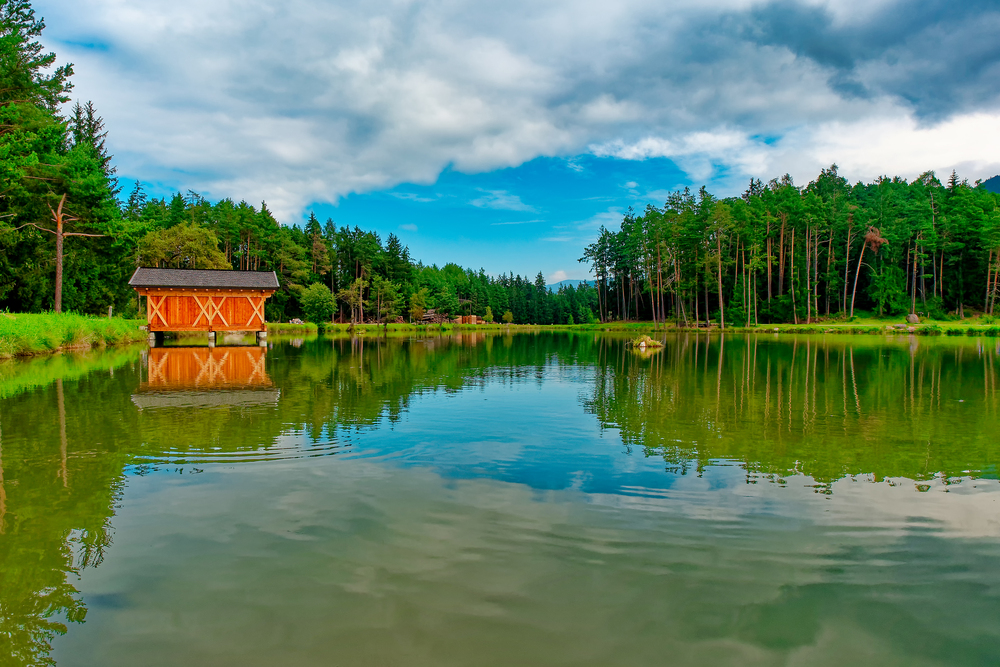
This lesser-known pass connects the Funes and Badia valleys, offering solitude
increasingly rare in the Dolomites. The surrounding peaks of the Puez-Odle group
provide a dramatic backdrop, while alpine meadows host grazing cattle during the
summer months.
You’ll find several traditional mountain huts serving local specialties, with the Ütia de Börz offering particularly panoramic dining. The area provides excellent opportunities for both hiking and mountain biking away from crowds.
Like Travel Pug’s content? Follow us on MSN.
Lago di Misurina
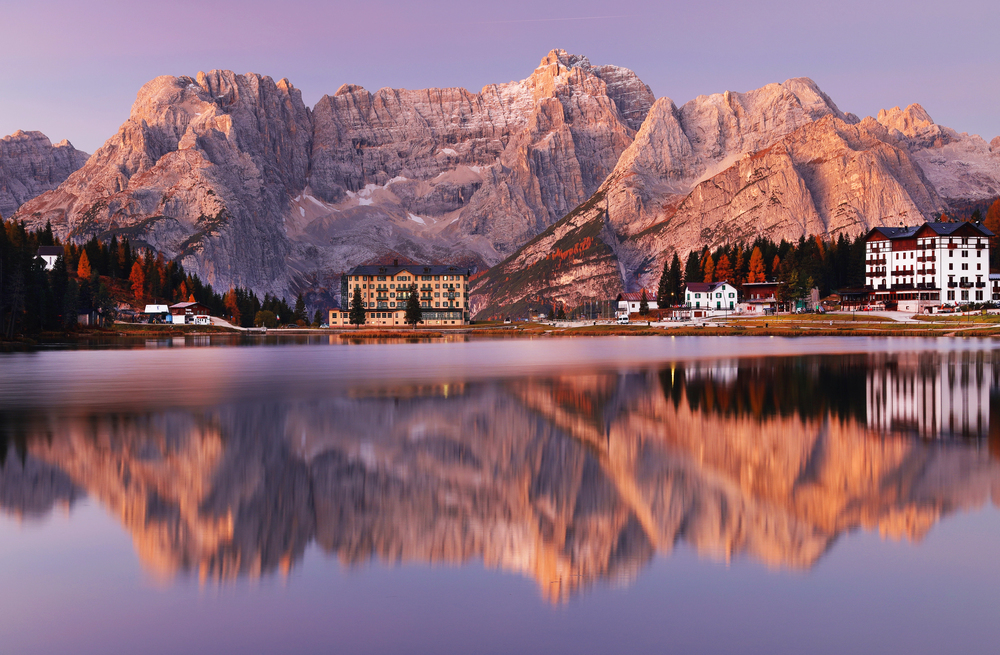
Known as the ‘Pearl of the Dolomites,’ this natural lake sits at 5,761 feet with
stunning views of the Tre Cime and Sorapis groups. The lake’s clean air has long
attracted visitors seeking respiratory relief, while the historic Grand Hotel Misurina
maintains its Belle Époque charm.
You’ll find easy walking trails around the lake and access to more challenging hikes in the surrounding mountains. During winter, the frozen lake becomes a natural ice skating rink.
Passo Falzarego
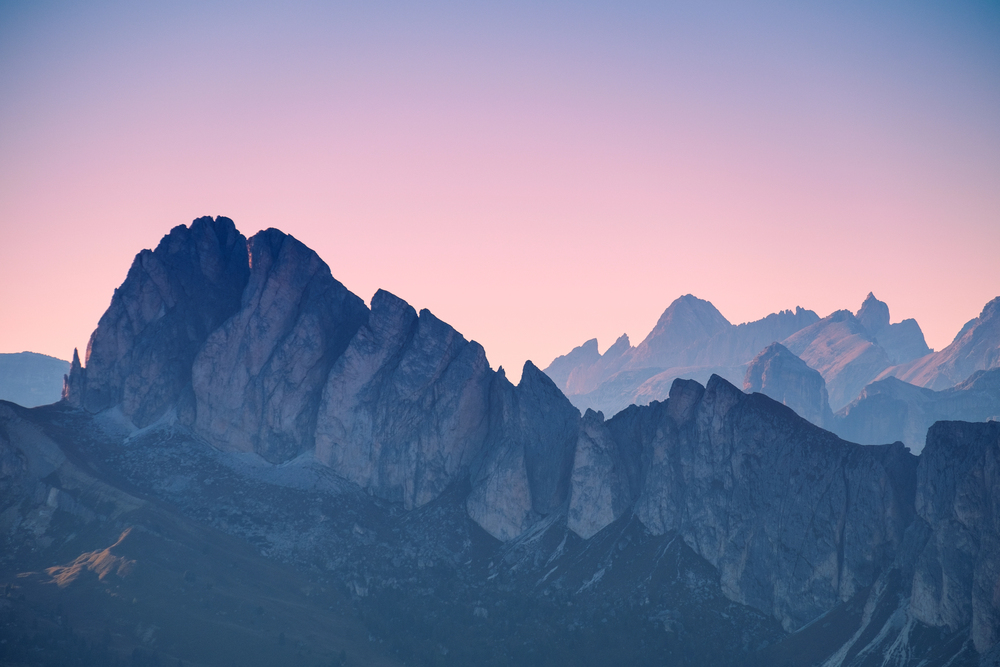
This strategic pass at 6,946 feet played a crucial role in World War I, evidenced by
the open-air museum and restored tunnels. The cable car to Lagazuoi reveals
incredible views and access to one of the most interesting via Ferrata routes in the
region.
You’ll find the poignant Ossario del Falzarego nearby, commemorating fallen soldiers, while several rifugios offer both dining and accommodation options. The pass provides excellent access to climbing areas and hiking trails.
Val Badia
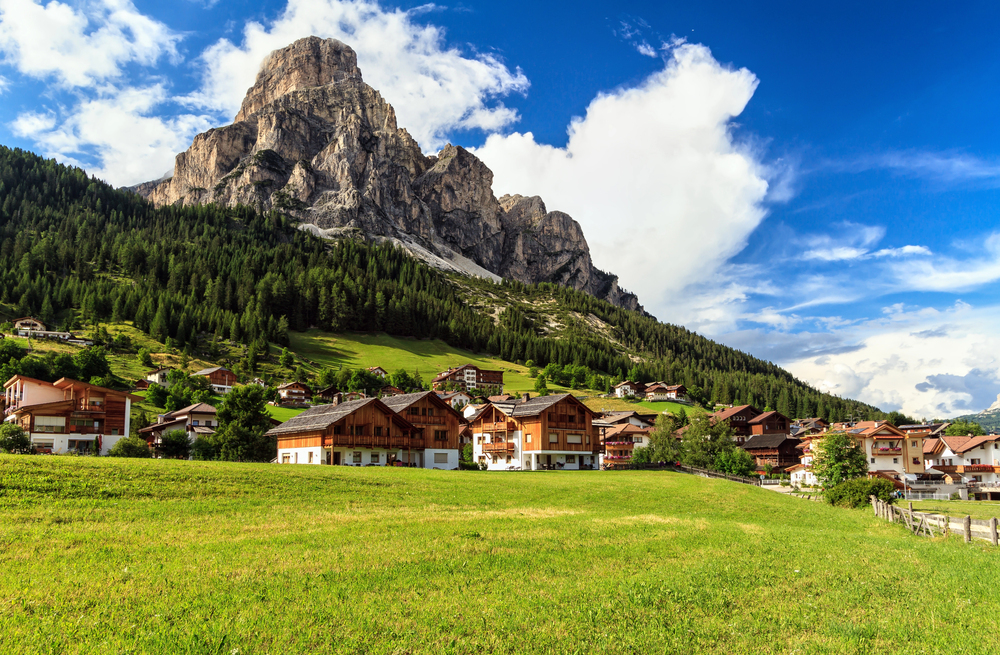
This valley showcases the best of Ladin culture while offering access to some of the
most dramatic scenery in the Dolomites. The villages of Corvara, La Villa, and San
Cassiano combine traditional architecture with modern amenities, including some of
the region’s finest restaurants.
You’ll find access to the Fanes-Senes-Braies Nature Park, numerous via ferrata routes, and the famous Alta Badia ski area. The valley becomes particularly beautiful in autumn when larch trees turn golden.
Like Travel Pug’s content? Follow us on MSN.
Exploring the Wonders of the Dolomites
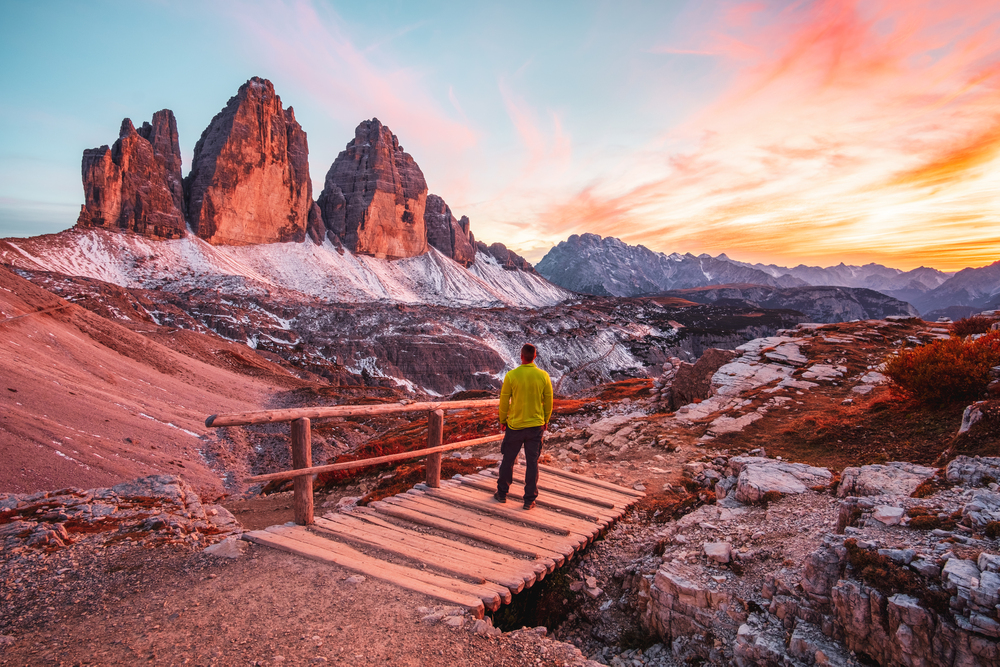
From towering peaks and pristine lakes to historic villages and cultural sites, the
Dolomites offer endless opportunities for adventure and discovery. Whether you’re
seeking challenges via ferratas or peaceful hiking trails or simply want to soak in
some of Europe’s most dramatic mountain scenery, these twenty locations provide
perfect starting points for exploring this remarkable region.
Remember that mountain weather can change rapidly, so always check conditions
and come prepared for your adventures in this magnificent corner of the Alps.
More from Travel Pug

- 15 Dangerous European Cities to Avoid
- 15 Caribbean Islands Where Tourists Keep Getting Scammed
- The 20 Most Fascinating Abandoned Places: A Journey Through Time and Forgotten Spaces
- 15 Hidden Places in the Smithsonian Museums Locals Love: A Guide to Lesser-Known Treasures
- 16 Hidden Florida Beach Towns That Aren’t Overrun with Tourists
Like Travel Pug’s content? Follow us on MSN.
